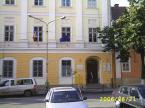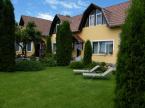Information
Bran (German: Törzburg, Hungarian: Törcsvár) is a commune in Braşov County, Romania. It lies 30 km from the city of Braşov.
The Teutonic Order began construction of a wooden fort (Bran Castle) in the early 13th century. After the fort's destruction in 1242 by Mongols, King Sigismund of Hungary ordered the construction of a stone castle in 1377, while the settlement of Bran began to develop nearby. Positioned high atop a steep cliff, the castle guarded a strategic route between Transylvania and Wallachia. In 1498 Bran fell under the jurisdiction of Braşov.
Bran Castle (Dracula's Castle)
Bran's castle is a famous spot for tourism, as it inspired the depiction of the castle in Bram Stoker's novel Dracula. Situated near Braşov in Transylvania, is a national monument and landmark of Romanian tourism built by the Teutonic Knights in (or around) 1212, after they had been relocated from Palestine into the Kingdom of Hungary.The fortress is situated on the border between Transylvania and Wallachia. In addition to its unique architecture, the castle is famous because of persistent myths that it had been the home of Vlad the Impaler; however, there is no physical evidence that Vlad ever lived there. According to myth, the Impaler may possibly have spent two days in the Bran dungeon when the area was occupied by Ottoman Empire.
The castle is open to tourists, who can view the inside alone or as part of a guided tour. Outside the castle are examples of traditional Romanian cottages.
In 2005, the Romanian government passed a special law allowing restitution claims on properties such as Bran, which was seized by the Communist government of Romania in 1948. In 2006, the Romanian government awarded ownership to Dominic Habsburg<ref>BBC, Son stakes Dracula castle claim, May 26, 2006 (accessed on January 9, 2007)</ref> an architect in New York City <ref>NY Daily News, N.Y. heir to get Dracula's digs, May 24, 2006 (accessed on January 9, 2007)</ref> who is negotiating to sell it back to Romania for an estimated US$75 million.
useful links
Zona Bran http://www.zonabran.ro

 English
English









